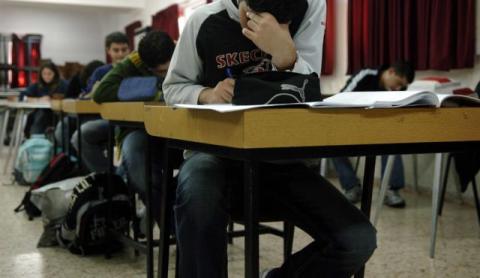Violence in Israeli Arab schools nearly doubled in last four years
An increase was also seen in the rate of middle school teachers conducting remedial learning sessions with small groups of students, and regularly scheduling one-on-one meetings with them (in part due to the New Horizon reforms.) In 2013-2014, 75 percent of middle school teachers reported having given remedial sessions to small groups in the week prior to the survey, compared to 52 percent four years earlier.
A significant increase was also found in the use of Internet learning in elementary and middle schools – 49 percent in elementary schools and 35 percent in middle schools in the most recent survey, compared to 28 percent and 21 percent respectively in the previous survey.
Most students have positive feelings toward school, the survey found, with the highest rate among elementary school pupils. Positive feelings about school were reported by 77 percent of elementary school pupils, 68 percent of middle-schoolers and 69 percent of high-schoolers The satisfaction rate had plateaued in the past two years , after rising at a moderate rate for the previous five years (with the exception of tenth- and eleventh-graders.)
Questionnaires were also distributed to teachers, most of whom reported a sense of satisfaction with their work and with the functioning of their schools. The rate was slightly higher - 74 percent - among elementary school teachers, with 71 percent of middle school teachers and 72 percent of high school teachers reporting a sense of satisfaction.
However, a higher percentage of elementary school teachers reported an overly heavy workload, compared to their colleagues in the higher grades. Just 22 percent of elementary school teachers said they did not feel their workload was too heavy, compared to a quarter of middle school teachers and 33 percent of high school teachers.
The questionnaires were distributed to 226,477 pupils in grades five through nine, and 19,794 telephone interviews were conducted with teachers in grades one through nine during January and February 2014. Pedagogical environmental survey questionnaires were also distributed to 82,983 pupils in grades ten and eleven, and to 9,635 teachers in those grades. In total, pupils and teachers from 852 elementary schools, 474 middle schools and 446 high schools took part in the survey.
Yarden Skop

